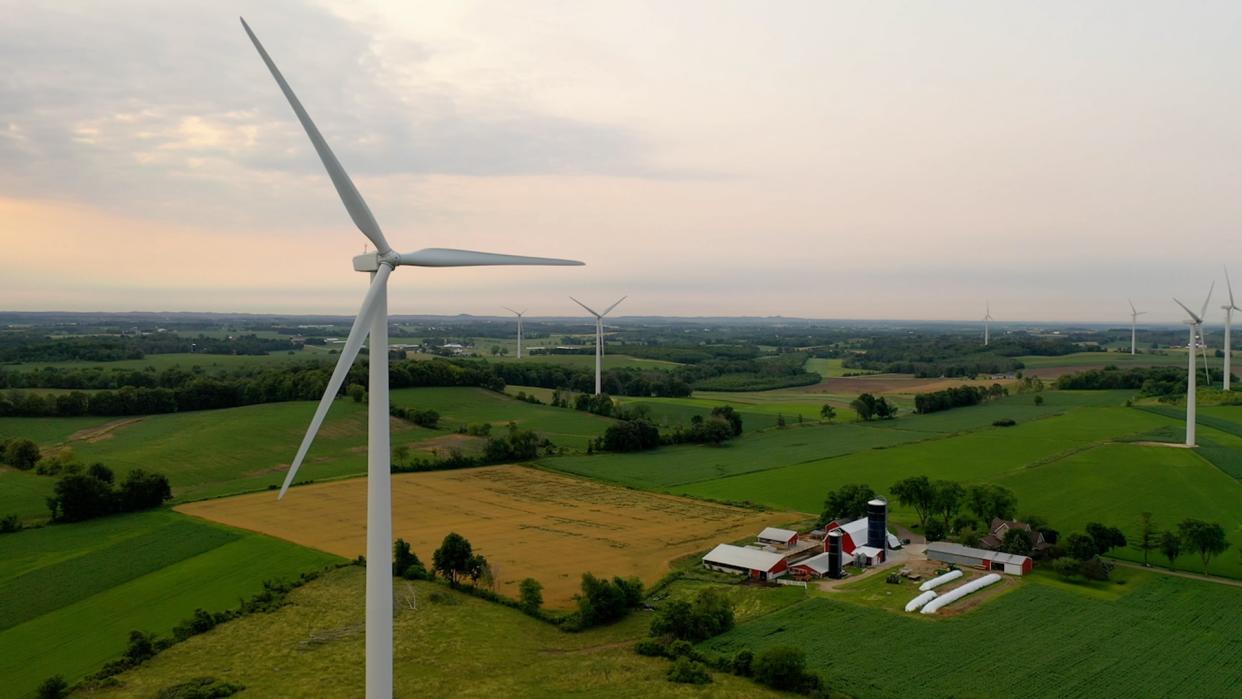Scientists explain misconception about wind turbines: 'This study might allow folks to take a fresh look'

When we imagine clean energy, solar and wind are top of mind. The U.S. Energy Information Administration (EIA) estimates that solar power generation will grow by 75% and wind by 11% in 2025 as a result of projects coming online in 2024. According to Environment America, wind energy could power up to 41 million homes as of 2022. The demand for wind energy looks bright and may not take as much space as expected.
The Washington Post reported a study discovering that wind farms, multiple wind turbines producing electricity to be fed into the energy grid, only take up to 5 percent of the land where they're erected. This discovery highlights that wind turbines can be built without agriculture being interrupted. In fact, wind farms built alongside preexisting roads and infrastructure may reduce risks to land development.
"This study might allow folks to take a fresh look at the ability to retain some of that economic benefit that agriculture has while still co-developing or developing wind energy at those locations," Ben Hoen, a staff scientist at Berkeley Lab, told The Post.
"There's no denying that wind and solar deployment is going to take up land," Hoen added. "But I do think that understanding the actual impacts and taking into account some of these co-use opportunities — whether it's roads or agriculture — are extremely important."
Already, developments of wind projects have reached bipartisan support, as a Washington Post–University of Maryland poll showed the majority of Americans are open to solar panels and wind turbines being built in their communities.
At the residential level, renewable energy has been successful for years. Estimates for Texas show the state is saving up to $20 million per day in fuel costs. At the commercial level, wind energy can be the link to power the agriculture industry while reducing harmful air pollution, ensuring food crop quality stays high. It's predicted that 60% more food will be needed to be produced by 2050, per the World Economic Forum.
Watch now: Solar-powered boats from the Honnold Foundation are making a difference in the Amazon
Wind farms and infrastructure coexisting provide many benefits, such as reducing construction costs and generating clean energy, which is seven times more land-efficient when producing energy per square meter on land that has preexisting roads and infrastructure, per Earth.com.
While the development of wind farms in multiple locations shows promise, other considerations are being discussed.
"For wind, it includes issues like visual impacts, noise, and bird and bat mortality. How people evaluate these trade-offs is complex," said Sarah Jordaan, principal investigator of the study.
By lessening dependence on dirty energy, communities can enjoy clean air, lower spending on energy bills, and maintain a healthy food system, per the U.S. Department of Energy.
"More than 60% of the electricity generated in Iowa comes from wind turbines," shared one commenter on the report, pleased to see the uptick in clean energy.
Join our free newsletter for weekly updates on the coolest innovations improving our lives and saving our planet.

